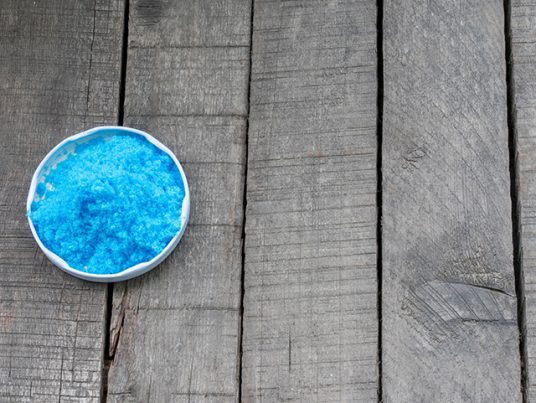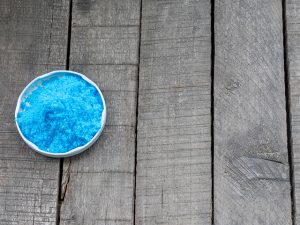
Cupric sulfate sources, health risks
Wednesday, October 25, 2017 by Michelle Simmons
http://www.naturalpedia.com/cupric-sulfate-sources-health-risks.html

Cupric sulfate is a fungicide used to prevent bacterial and fungal diseases of fruits, vegetables, nuts, and field crops. It is combined with lime and water as a protective fungicide known as the Bordeaux mixture for application on leaves and treatments for seeds. Since 1956, cupric sulfate has been used in pesticide products in the United States. Cupric sulfate prevents diseases such as mildew, leaf spots, blights, and apple scab. In addition, it is used as an algaecide, an herbicide in irrigation and municipal water treatment systems, and as a molluscicide which is a material used to fight off and kill slugs and snails.
This compound naturally occurs in inorganic salt and copper. Cupric sulfate is available in the forms of crystals, dusts, wettable powders, and fluid concentrates.
Cupric sulfate has other names such as copper (II) sulfate, blue-stone, blue vitriol, basic copper sulfate, BSC copper fungicide, CP basic sulfate, and tri-basic copper sulfate. It has a chemical formula of CuSO4.
Cupric sulfate can be found in two forms, cupric sulfate anhydrous and pentahydrated cupric sulphate, The former is a white amorphous powder, while the latter has a brilliant blue color. Pentahydrated cupric sulphate is the most known and commonly used form of the copper salt.
Harmful effects that can be caused by cupric sulfate
There are several harmful effects that can be caused by even just a brief exposure to cupric sulfate. Eye exposure to cupric sulfate can cause severe eye irritation. Consuming large amounts of cupric sulfate can cause nausea, vomiting, and damage to body tissues, blood cells, the liver, and kidneys. In worst cases and extreme exposures, it can lead to shock and death.
Body systems harmed by cupric sulfate
There are a few body systems harmed by cupric sulfate. Cupric sulfate is harmful for the digestive system. Ingestion of cupric sulfate can cause irritation to the gastrointestinal tract. Symptoms of cupric sulfate poisoning include a metallic taste in the mouth, burning pain in the chest and abdomen, intense nausea, vomiting, diarrhea, headache, sweating, shock, and discontinued urination resulting to yellowing of the skin. Moreover, injury to the brain, liver, kidneys, and stomach and intestinal linings may also occur in cupric sulfate poisoning.
Cupric sulfate is also bad for the integumentary system, particularly the skin. Skin contact can lead to itching, eczema, or allergic reactions.
Moreover, the chemical is damaging to the ocular system. Eye contact with cupric sulfate can result to redness, pain, blurred vision, conjunctivitis, inflammation of the eyelid lining, excess fluid buildup in the eyelid, cornea tissue deterioration due to breaks or ulceration in the eye’s mucous membrane, and clouding of the cornea.
Cupric sulfate is bad for the respiratory system when inhaled. The chemical can cause irritation in the respiratory tract, cough, and sore throat.
Where to learn more
- The heavy metal dilemma
- Dietary spirulina reduces copper toxicity, improves blood and growth
- Everyday heavy metal toxicity
- Pets Can’t Lie, but Pet Food Manufacturers Legally Can
- Pet Food Ingredients Revealed!
Summary
Cupric sulfate is an inorganic compound that is a combination of sulfur and copper. It is used to kill bacteria, algae, roots, plants, snails, and fungi. It can be in the form of liquid, powder, or crystals.
Cupric sulfate can cause severe eye irritation, nausea, vomiting, and damage to body tissues, blood cells, the liver, and kidneys.
Cupric sulfate is harmful for the digestive, integumentary, ocular, and respiratory systems.
Extreme exposure to the chemical may lead to shock and death.
Sources include:
Tagged Under: Tags: cupric sulfate






